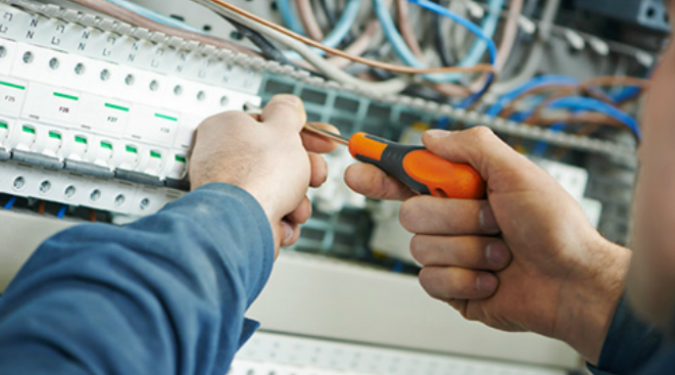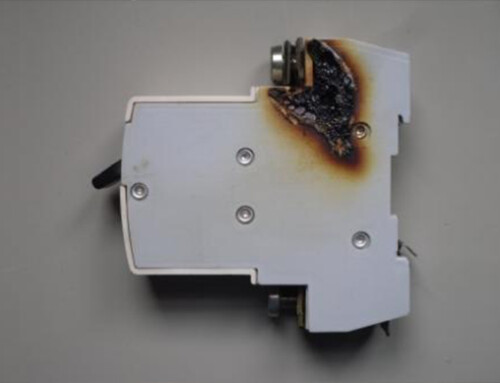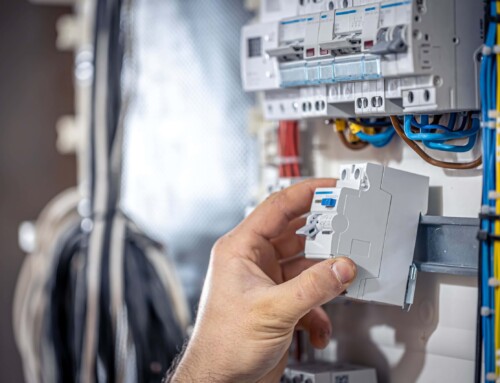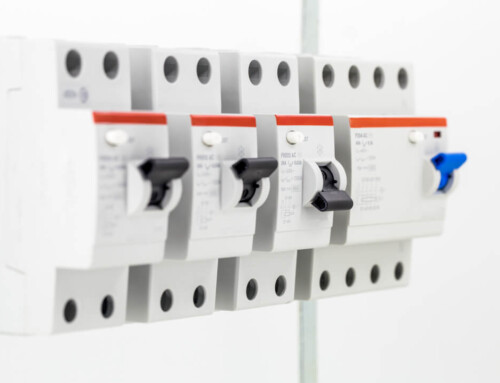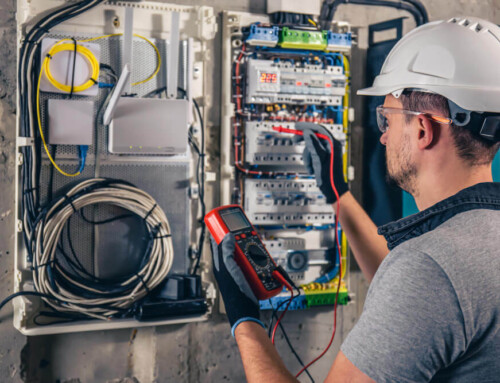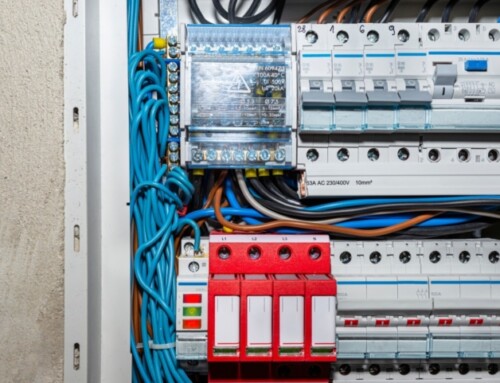Table of Contents
If you own or manage a home, it’s a good idea to get familiar with your circuit breaker box, even if it’s something you rarely think about. It’s that grey metal panel usually hidden in the basement, garage, or utility room. But don’t underestimate its quiet presence. It plays a major role in how electricity flows safely through your space.
Simply put, the electrical circuit breaker box takes the power from your utility company and sends it throughout your home. Knowing its basics can make things less stressful if something ever goes wrong or needs updating.
How Does Circuit Breaker Box Work?
The main circuit breaker panel box is essentially a big switch that safely distributes the supply of power to your house. The circuit breaker box also houses other smaller sub-switches that connect with specific areas of your home. These small switches are called breakers, and their function is to ensure electrical safety.
So, as a homeowner, you would only need to access the main circuit breaker panel when the power trips or when performing repairs or replacements.
Why is the Circuit Breaker Box Important for Home Safety?
The electricity that flows from your utility company’s line passes through the meter and into the main circuit breaker panel. This leaves you and your family susceptible to electric hazards from your home appliances, HVAC system, and electronic equipment. Electric shocks, burns, and fires can do serious damage to life and property.
The circuit breaker panel supplies power. However, it is also designed with safety features that protect the wiring and avoid electrical shocks and fire due to overloading or heat build-up.
The safety mechanism of the circuit breaker panel guards your home against all the hazards of improper grounding, short circuits, voltage fluctuations, faulty wiring, and damaged insulation.
What are the Main Safety Features of a Circuit Breaker Panel?
Take a peek inside your circuit breaker panel box, and you can find several parts working together to keep your home powered up and protected:
Take a peek inside your circuit breaker panel box, and you can find several parts working together to keep your home powered up and protected:
- Main Breaker (or Main Switch)
This big switch turns off electricity to the entire panel. It’s what you’d shut off during a major repair or if there is an emergency that requires cutting all power. - Circuit Breakers
- Single-Pole Breakers: These are the smaller switches you can see lined up inside the box. Most of them handle everyday outlets and lights, typically rated for 15 to 20 amps.
- Double-Pole Breakers: Larger appliances like dryers and water heaters need more juice. These breakers cover that and usually handle 30 to 50 amps.
- AFCIs (Arc Fault Circuit Interrupters): These are newer safety breakers that shut off power if they detect an arc, like the kind that could start a fire if wires are damaged.
- Hot Bus Bars
These metal strips carry electricity from the main breaker and pass it to each smaller breaker. - Neutral Bus Bars
They return unused electricity to the system and help balance the flow. - Grounding Bar
This is your backup in case something goes wrong. It sends excess electricity safely into the ground to prevent electric shocks. - Sub-Panels
Sub-panels are small breaker boxes designed to handle more circuits when you don’t have the space to accommodate new circuits. - Expansion Slots
These are just open spots inside the box where new breakers can be added later if you plan to upgrade your home’s electrical system down the line.
What are the Different Types of Breaker Boxes?
Not every home has the same kind of breaker box setup. Here’s a quick breakdown of the most common types you might come across:
- Main Breaker Panel
This is the standard panel found in most homes. It connects directly to the power supply from the utility company. It includes a main breaker that controls electricity for the entire house. All other breakers branch off from here. - Main Lug Panel
These panels don’t have a main breaker built in. Instead, they are usually used as secondary panels (sub-panels) that get their power from a disconnect switch or another breaker box. - Subpanel
Used when you need to supply power to specific areas like a workshop or addition. Subpanels make it easier to manage load and keep things organized when circuits are spread out. - Transfer Switches
If you’ve got a generator for backup power, a transfer switch is what allows you to switch safely between your generator and the main utility grid during a power outage. It prevents backfeeding and keeps utility workers safe.
Understanding the Difference Between Breaker Box Sizes
Most homes ideally have 100 or 200-amp breaker boxes depending on the amount of electricity that the panel needs to handle and the number of circuits that are added to the main circuit breaker panel.
So, when someone needs a bigger breaker box, they could be referring to the amps or the number of circuits.
Warning Signs for Circuit Breaker Box Replacement
Ideally, the longevity and reliability of the circuit breaker box can suffice for 25-30 years. But you may need to replace it earlier if you spot any of the following signs:
- The circuit breaker keeps tripping frequently
- The circuit breaker won’t reset
- Overheating of the electrical supplies and materials
- Burning smell in the circuit breaker panel
- Physical damage to the electrical supplies and materials
Safety Reminders for Homeowners
If you are checking the circuit breaker panel at any point, it’s likely due to electrical issues or due to a power trip. But before you get going with your DIY project, keep these points in mind:
- Flip the switch on and off and test the different areas of your home controlled by the main circuit breaker
- Always work with dry hands and on a dry surface
- Avoid repeatedly resetting a power break if the circuit breaker won’t reset
- Do not touch or attempt to troubleshoot damaged and exposed wiring. Always call a licensed and certified electrician!
If you are facing issues with your circuit breaker panel frequently, switch to our high-quality, reliable, and durable circuit breakers for lasting peace of mind.

